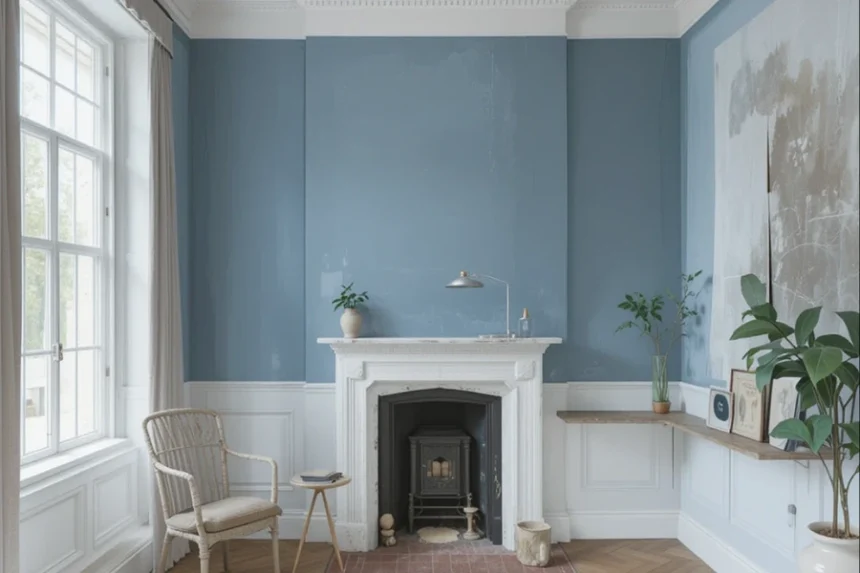When it comes to decorating and renovating interiors, choosing the right type of paint is crucial for achieving the desired look, durability, and finish. Among the many options available, emulsion paint stands out as one of the most popular and versatile choices for walls and ceilings. If you’ve ever wondered, “what is emulsion paint,” this article will provide an in-depth explanation, covering its composition, types, uses, advantages, and tips for application.
Understanding What Is Emulsion Paint
Emulsion paint is a water-based coating commonly used for interior walls and ceilings, offering a smooth, matte, or silky finish. It is well-known for being simple to apply, drying quickly, and adapting to a variety of interior surfaces. The term “emulsion” refers to a stable mixture of tiny water droplets dispersed within a liquid binder, which forms a durable film on application.
Composition of Emulsion Paint
The primary ingredients of emulsion paint are:
Water: Acts as a solvent, making the paint water-based and easy to clean.
Polymer Binder (Resin): Provides adhesion and film-forming properties. Common polymers include acrylic, vinyl, or styrene-acrylic.
Pigments: Impart color and opacity.
Fillers: Enhance texture, smoothness, and stability.
Additives: Improve flow, leveling, drying, and anti-mildew properties.
Compared to oil-based paints, emulsion paint is less hazardous more environmentally friendly due to its water-based composition.
Types of Emulsion Paint
There are several types of emulsion paint suited for different applications and finishes:
1. Matte Emulsion Paint
Matte finishes are characterized by their non-reflective surface. They are excellent at hiding surface imperfections and are ideal for living rooms, bedrooms, and ceilings.
2. Satin or Silk Emulsion Paint
Offering a soft sheen, satin or silk emulsion paint provides a slightly reflective surface, making walls look smooth and elegant. It works well dining rooms, corridors, or bedrooms.
3. Eggshell Emulsion Paint
This type, which gets its name from its eggshell-like finish, is durable or adds a subtle sheen, making it appropriate for high-traffic areas like bathrooms and kitchens.
4. Vinyl Emulsion Paint
Vinyl-based emulsion paints are highly durable and resistant to moisture, making them perfect for areas prone to humidity, such as kitchens and bathrooms.
Uses of Emulsion Paint
Emulsion paint is primarily used for interior decorating, and its versatility allows it to be applied on a variety of surfaces, including:
- Wall surfaces
- Ceilings
- Plasterboard
- Masonry
- Concrete
The ease of cleaning and quick drying make it a preferred choice for residential, commercial, and institutional settings.
Advantages of Using Emulsion Paint
Choosing emulsion paint offers several benefits:
1. Ease of Application
Water-based formula makes it easy to apply using brushes, rollers, or spray equipment. Additionally, it makes water cleanup simple.
2. Quick Drying Time
Most emulsion paints dry within a few hours, reducing project turnaround times.
3. Low Odor and Toxicity
Compared to oil-based paints, emulsion paints emit fewer fumes and have lower VOC (Volatile Organic Compounds) levels, contributing to safer indoor environments.
4. Variety of Finishes and Colors
Available in numerous shades and finishes, emulsion paints can match any interior decor style.
5. Cost-Effective and Environmentally Friendly
Generally more affordable than oil-based paints and eco-friendlier due to its water-based nature.
6. Excellent Coverage and Opacity
Formulated to provide good coverage, helping to hide imperfections and previous paint layers with fewer coats.
Tips for Applying Emulsion Paint
To achieve a professional-looking finish, consider these application tips:
Surface Preparation: Clean and smooth the surface before painting. Fill cracks and holes, and sand uneven areas.
Priming: To improve uniformity choose a primer that is appropriate for the surface.
Use Quality Tools: Choose good quality brushes or rollers for even application.
Apply Thin Coats: Multiple thin coats are preferable over thick paint layers.
Dry and Cure: Allow adequate drying time between coats and after finishing.
Environment and Maintenance
Emulsion paint’s water base makes it easy to wash and maintain. Regular dusting and light cleaning with damp cloths keep walls looking fresh. It’s also important to ensure proper ventilation during and after painting to facilitate drying and reduce moisture buildup.
Conclusion
So, what is emulsion paint? It is a water-based decorative coating that offers a practical, stylish, and environmentally friendly solution for interior walls and ceilings. Its diverse types, easy application, and excellent finish qualities have made it the go-to choice for homeowners, contractors, and interior designers alike. Whether you’re aiming for a sleek satin look or a matte understated ambiance, emulsion paint provides the flexibility needed to transform any space efficiently and beautifully.
Understanding the nuances of emulsion paint can help you make better choices for your decorating projects. With proper application and selection of the right type, your interior walls will not only look stunning but will also remain protected and easy to maintain for years to come.



